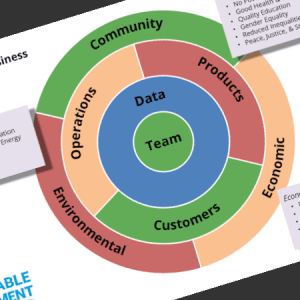Considering a change to a centralized or decentralized IT organization? Here are five real-world stories of companies making a change - there is no one obvious choice, it hinges on culture, value creation - and willingness to change.
I have written in the the past about the classic central / decentral debate; which is best? Should we centralize all of our IT resources and decisions, gaining cost efficiencies and standardization? Or should we “empower the endpoints”, and let operating units within the business make the decisions?
I find it fascinating how often this comes up in conversation; an amazing number of businesses are taking the decision to tap the brakes and switch course. It makes total sense, they will say, and it is a core part of our Digital Transformation.
I also find it fascinating that the “right decision” is amazingly inconsistent – truly a 50-50 proposition, with half of these conversations going in each direction. Obviously, it depends on what is right for your organizations’ preferred value creation method, as well as the culture.
IT Location as Digital Transformation
First, let’s deconstruct that little tidbit – is “[de]centralized IT” all that is required for a Digital Transformation? Clearly not – we are diluting the Digital concept and woefully underselling it’s potential when using the term in this way. However, a fully formed Digital Transformation will need to take a look at the structural “architecture” of how your business manages data and information. Critical decisions around how your company will enable the success of individuals and teams will often drive a change in viewpoint.
Current Stories
It is not as simple as picking cost control over empowerment – the variations are many. Here are a couple of real-world examples from advisory projects over the last few months.
- Decentralization: A food and beverage distributor has a strong central offering for analytics that drive revenue in a meaningful way. This was a great reason for the business units to standardize on the central approach – the payback was top line, visible, and immediate. But now the company is shifting to decentralized. Why? They have enabled strong analytics skills in the business units, and increased demand – now, central resources are just slowing down development requests.
- Centralization: An industrial distributor on an acquisition tear has decided to implement a centralized shared services model for certain aspects of IT. They are moving towards a fully integrated supply chain, and want to optimize operations across multiple shipping points, significantly driving customer service. The customers are asking for this!
- Centralization: A similar story – a PE firm with a growing list of properties that they cannot move in the current heated M&A market. Multiples are driving prices to unrealistic levels, and the PE folks need to change the financials to get a better return. Even though this complicates their BU operations, the potential for hard cost savings and soft dollar (productivity) improvements is worth the hassle.
- Decentralization: A diversified manufacturer operates a mixed-mode IT function that has featured a strong central component. The lessons of standard work have taken hold in the operating units, but Central has been working on risk reduction and other work that is complicating operations and delivering less in terms of hard results. Corporate wants to get out of the way – time to shift more work to the operating units!
- The Toss Up: A professional services firm has operated in a decentralized manner, resulting in duplication of capability, local fiefdoms, and less focus on customers and value creation. However, the first pass of centralized capability building resulted in poorly executed capabilities that are not scalable or sustainable. This has become a battle of wills, and teams are attacking weakness instead of defending strength. There is more work here for Change Management and Engagement that there is for technical architects and process analysts.
There is one interesting constant in most of these stories – established, tenured employees tend to resist change in amazingly subtle ways. If it ain’t broke, don’t fix it – a lack of innovation due to risk intolerance and fear of failure. Or happiness with the status quo – why rock the boat? Once again, a difficult and decidedly non-technical issue; does this mean the only solution is to swap out your technology teams? On the contrary – they have massive value and can make great things happen – they just need to get re-energized, and realize the positive impact they can have for the company, the customers – and themselves!
Defining Problems, not Solutions
Everybody loves a good failure story – a little professional schadenfreude to help you remember that it’s not all that bad where you are at. But these stories of struggle are helpful case studies that illustrate the need for a compelling Why? for your Digital Transformation – and an understanding that Finance, Operations, and HR are just as important as the technologists and the analysts.
How would you suggest breakthrough actions for these organizations? Let us know in the comments …
16 January, 2020






Comments (0)